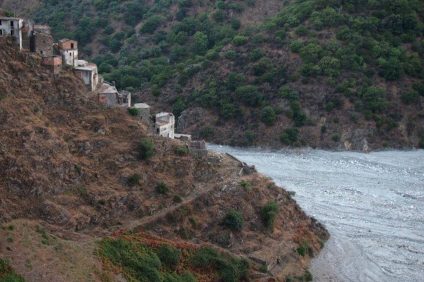Bassano del Grappa is most famous for two things: the Alpine troops and… grappa! Let's go and discover all the surprises that this city at the foot of the mountains can reserve for a day of leisure.
Bassano and its history
A Roman city, Bassano experienced an important development in the Middle Ages, during which, like many Venetian cities, it was subject to numerous dominations. In fact, some of its most important monuments date back to this period, such as the upper castle (or of the Ezzelini), the civic tower and the Roman-Gothic church of San Francesco. One of the best-known characters of this period is Ezzelino III da Romano, a brave but very fearsome leader remembered by Dante among the damned of hell. In reality, Ezzelino III was very close to the emperor Frederick II of Swabia, an erudite man and a lover of culture and literature. It is probable that Ezzelino was also strongly influenced by this cultural climate and that he had tried to establish a court like the imperial one in Bassano.

Another important period in Bassano's history is the First World War. Mount Grappa which is the background was in fact a well-known war scenario and a symbol of the resistance of the Italian troops after the rout of Caporetto. A statue made by the local sculptor Severino Morlin was recently dedicated to the Alpine troops, a real institution of the city. The protagonists are two lovers about to leave each other with a kiss because he, an Alpine, is leaving for the front. If you visit Bassano with your other half, a photo near the statue is practically a must!
Culture and shopping go hand in hand
Bassano is a cultured and elegant city, so culture and beauty go hand in hand, even in shopping. In the central via Matteotti you can find what is considered one of the ten most beautiful bookshops in Italy, the Palazzo Roberti bookshop. This temple of books is in fact located inside an elegant building with balconies, large windows and rooms decorated with stucco. Bassano is the perfect city for shopping because there are many well-kept and welcoming shops along the streets of the center. For a refreshing break there is the Danieli coffee, which is located inside a glazed loggia with a neo-liberty flavor; inside you can see molded columns and ceilings with decorated stuccoes.

In the same square, or Piazza Garibaldi, there is also space for culture. In fact, there are the civic museums, which house archaeological artifacts, drawings by Canova, works by Da Ponte, Tiepolo and Marco Ricci among others. Contemporary art exhibitions are also often organized here. On the opposite side instead the civic tower, from which you can enjoy a splendid view from the top of its 42 meters high of the city, the wide plain and the Grappa. It also hosts exhibitions: the last one in progress is Story plots, dedicated to fashion in the Middle Ages with reproduction of clothes of the time. To admire the frescoes of the loggia of the Municipality, in the adjacent Piazza della Libertà, and certainly the view of the famous Ponte degli Alpini, to look at after walking along the walkway of the castle. In the unexpectedly large museum proposal, it is highly recommended Sturm palace, a splendid eighteenth-century building overlooking the Brenta.
Getaways into nature: the Brenta river and Monte Grappa
After having feasted on shopping and culture, you cannot miss a moment of relaxing nature. The choice is twofold: a nice walk on Mount Grappa or along the Brenta river, which laps the city. Mount Grappa reaches a height of 1775 meters and offers numerous excursions, from walks among fir and beech trees to climbing. Many places to discover are dedicated to the war memory, one of them being the military shrine where 12.615 fallen rest, 10.332 of which are unknown.

Not far away the Austro-Hungarian cemetery welcomes the remains of 10.590 soldiers, 10.295 unknown. Numbers that make us perceive an enormous emptiness and a feeling to be explored in the midst of the breath of the wind, at the foot of the inhabited world. Not far from there is also the sculpture of the partisan sculptor Augusto Murer dedicated to the victims of Nazi-fascism. The man's wide open eye, with liquefied bronze limbs, will surely leave you breathless as you remember other war stories that took place in those peaks. Also along the Brenta river there are many paths, routes and excursions to try, both on foot and by mountain bike.





